Essays are narratives of varying lengths that engage in extended analysis of multiple images, objects, monuments, buildings, or spaces.
Essays
Beijing's Tibetan Buddhist temples have always been places through which diverse groups of people moved. During the Qing, these were spaces where elites from different backgrounds met, collaborated, and enacted the multicultural character of the empire within the capital. The temples themselves announced the pluralistic nature of the Qing dynasty, as well as its grandeur, through their public display of signs and stelae aimed at the multi-ethnic audiences of the empire.
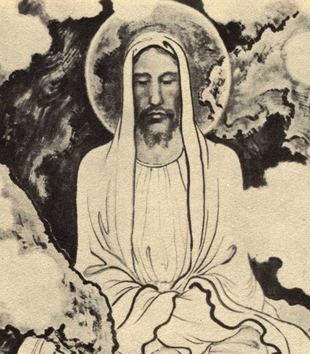 In Search of Multiple Colors of Christ: Daniel J. Fleming and the American Protestant Encounter with Asian Christian Visual Arts, 1937-1940
In Search of Multiple Colors of Christ: Daniel J. Fleming and the American Protestant Encounter with Asian Christian Visual Arts, 1937-1940
Fleming’s trilogy illustrates the complex dynamics of race, religion, and visual arts in the interwar United States. Though the extant scholarship highlights the increasing Anglo-Saxonization of Jesus’s body in American visual culture in this era, Fleming’s story reveals a virtually opposite impulse in liberal Protestantism: to search for multiple colors of Christ.
A special issue curated by Kati Curts and Alex Kaloyanides
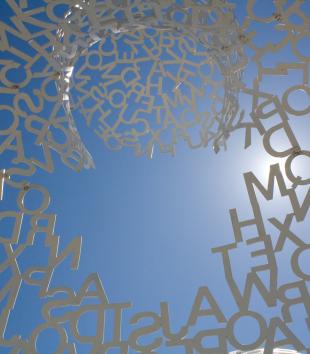 Characterizing Material Economies of Religion in the Americas: An Introduction
Characterizing Material Economies of Religion in the Americas: An Introduction
Kati Curts and Alex Kaloyanides introduce this special issue of MAVCOR Journal devoted to examining four key categories: “Material,” “Economies,” “Religion,” and “America(s).” The ambition of this issue is that the collective inquiries of its authors, which span various interpretive histories and genealogical fragments, can offer ways to better understand their assorted conveyances, as well as the powerful grip of their critical conjunction.
 Medals, Memory, and Findspots
Medals, Memory, and Findspots
For many Indigenous people of Turtle Island, also known as North America, treaty medals are material reminders of sacred promises made between their nations and the British Crown or the U.S. Government. Settlers and colonial officials, by contrast, have often treated these medals as mere trinkets.
A special issue guest edited by Kambiz GhaneaBassiri and Anna Bigelow.
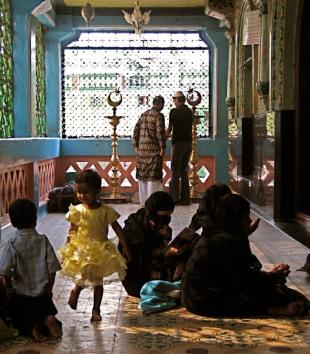 Introduction to the Special Issue: Material Islam
Introduction to the Special Issue: Material Islam
Anna Bigelow and Kambiz GhaneaBassiri introduce this special issue of MAVCOR Journal devoted to Material Islam. It explores devotional objects, the Islamic sensorium, the book as a material object, the Muslim body, and the various roles of the mosque as a social, political, and spiritual space. Taken together, its varied essays demonstrate an incredibly wide-ranging, rich, and exciting arena of study.
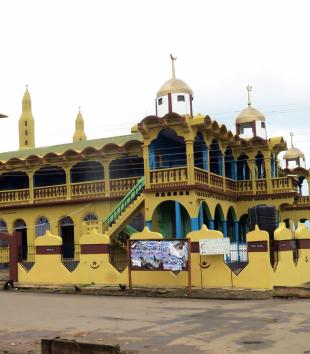 The Transcontinental Genealogy of the Afro-Brazilian Mosque
The Transcontinental Genealogy of the Afro-Brazilian Mosque
This article examines the genealogy of Afro-Brazilian mosques, answering some of the most immediate and puzzling questions that they force all who see them to ask. The answers to these questions demonstrate the fluidity of categories such as European, African, Islamic, and Christian, and how West African Muslims effectively drew on an architectural vocabulary with connections to three continents to forge an emergent cosmopolitan identity.
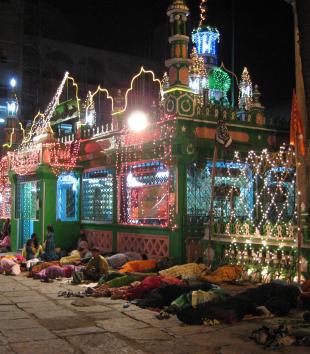 Senses of Belonging: Materiality, Embodiment, and Attunement at Sufi Shrines in India
In exploring the multiple modalities of Muslim belonging and unbelonging in India, the arenas in which Muslims and non-Muslims interact, especially at shared holy places, are extremely illuminating locales. This essay explores the ways in which material and somatic forms of interreligious encounter at a Sufi dargah (درگاہ), or tomb shrine, in Bengalaru (Bangalore) exemplify everyday as well as spectacular practices of shared piety that also reimagine the possibility of collective belonging in a time of precarity.
Senses of Belonging: Materiality, Embodiment, and Attunement at Sufi Shrines in India
In exploring the multiple modalities of Muslim belonging and unbelonging in India, the arenas in which Muslims and non-Muslims interact, especially at shared holy places, are extremely illuminating locales. This essay explores the ways in which material and somatic forms of interreligious encounter at a Sufi dargah (درگاہ), or tomb shrine, in Bengalaru (Bangalore) exemplify everyday as well as spectacular practices of shared piety that also reimagine the possibility of collective belonging in a time of precarity.
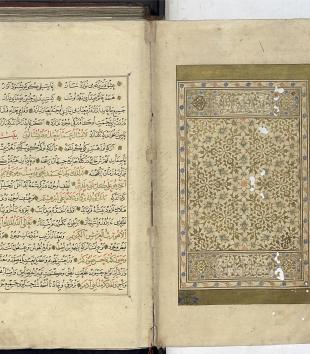 Adorning the King of Islam: Weaving and Unraveling History in Astarabadi’s Feasting and Fighting
Adorning the King of Islam: Weaving and Unraveling History in Astarabadi’s Feasting and Fighting
This article traces a fourteenth-century Persian history from Anatolia, Bazm wa Razm (Feasting and Fighting), written by ʿAzīz al-Dīn Astarābādī, from its presentation copy to its various recensions down to the modern period, examining how each era visually refigures this textual manifestation of its original patron, Burhān al-Dīn Aḥmad (r. 783-800 AH/1381-1398 CE), for a new purpose.
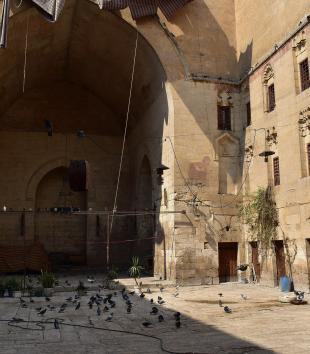 On the Material and Social Conditions of Khalwa in Medieval Sufism
On the Material and Social Conditions of Khalwa in Medieval Sufism
Ubiquitous across the medieval Islamic world, khalwa is the practice of self-isolation, typically in a small cell, in order to focus on pious devotions. This article offers one possible approach to theorizing the heterogenous elements of khalwa coherently by insisting that we take the material and the social as seriously as we do the human and the spiritual.
 Depicting Kongo and Angola in the Seventeenth and Eighteenth Centuries
Depicting Kongo and Angola in the Seventeenth and Eighteenth Centuries
As part of their activities in Kongo and Angola Capuchin Franciscan friars created dozens of images and wrote hundreds of pages of text in works that they called "practical guides." These Capuchin didactic images form an exceptionally important corpus that enriches our knowledge of central Africa and dramatically multiplies the European-format visual record about the African continent before 1800.
 Nature, Culture, and Faith in Seventeenth-Century Kongo and Angola
Nature, Culture, and Faith in Seventeenth-Century Kongo and Angola
Early modern central Africa comes to life in the images that Capuchin friars. This Capuchin central African corpus consists today in four extant manuscripts connected by form and content. This essay offers additional visual material from the corpus by featuring details of each individual vignette that comprise the 1650s poster now in the Museo Francescano, as well as the unpublished versos of the Parma Watercolors that feature text.
 Models of a Bygone World: Popular Nineteenth-Century Nativity Scenes as a Representation of Chilean Society
Models of a Bygone World: Popular Nineteenth-Century Nativity Scenes as a Representation of Chilean Society
Embracing the belief that the humblest of individuals participated in Jesus’s birth with their presence and their gifts alongside the wisest, Christians of every era have wished to display their own participation and contribution to this foundational Christian event. This article describes the ways in which a traditional, rural-inspired society like that of Santiago, Chile at the end of the nineteenth and the beginning of the twentieth centuries expressed itself through its nativity scenes.
Guest edited by Amy Holmes-Tagchungdarpa and Kalzang Dorjee Bhutia in collaboration with MAVCOR Journal Editor Emily C. Floyd. The call for papers for this special issue invited scholars coming from diverse disciplines (religious studies, anthropology, archaeology, history of art, visual studies, etc) and working across a range of high altitude ecologies, from the Andes to the Himalayas and beyond, to consider how the specificities of these regions impact material and visual aspects of religious practice. This special issue is published on a rolling basis.
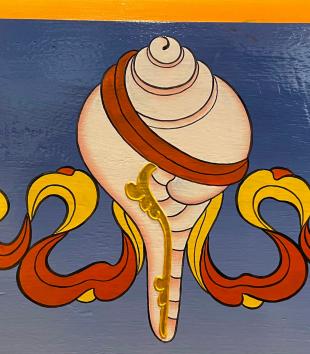 Flying Conches in the High-Altitude Oceans of the Himalayas: Displaced Objects and Multiscalar Relations in the Mountains of Sikkim
Flying Conches in the High-Altitude Oceans of the Himalayas: Displaced Objects and Multiscalar Relations in the Mountains of Sikkim
Conch shells frequently appear as objects in religiously inspired artwork and shrines in Sikkim, west India. Their frequent appearance in material culture and invocation in Classical Tibetan-language literary culture is indicative of a rich repository of connections. This essay explores some of their many resonances, in particular their significance as indicators of ecological change in the Himalayas.
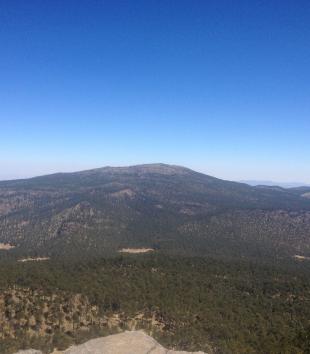 The Ritual Ascent at Mount Tlaloc, Mexico
The Ritual Ascent at Mount Tlaloc, Mexico
Bridging ecology, ethnohistory, linguistics, and art historical inquiry, this article argues that the various forms of vegetation encountered along the slope of Mount Tlaloc during the ascension of the tlahtoque were of ritual significance within Nahua worldview.
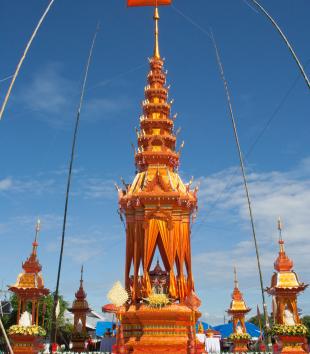 Gold Palaces: Merit, Beauty, and Perfection in the Cremation Structures of Monks in Northern Thailand
Gold Palaces: Merit, Beauty, and Perfection in the Cremation Structures of Monks in Northern Thailand
Cremation structures serve the utilitarian purpose of incinerating a corpse to aid transition from life to death, but in contemporary practice in Northern Thailand, opulent, golden-colored cremation structures called prasat sop also create a stunning sight that give local viewers a deeper understanding of all sentient beings’ connection to death.
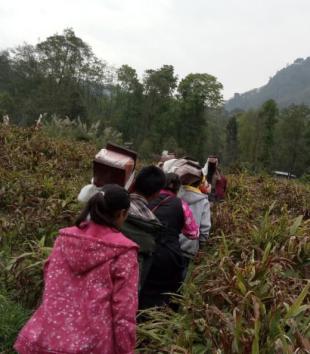 The Book as a Generative Agent: The Buddhist Canon as a Community Member in Book Procession Rituals of the Himalayas
The Book as a Generative Agent: The Buddhist Canon as a Community Member in Book Procession Rituals of the Himalayas
Known as the Bumkor, the books that make up the Bum are not just objects, but are generative, active agents that are capable of producing and renewing auspiciousness in the local human and nonhuman community that reside in the landscape.
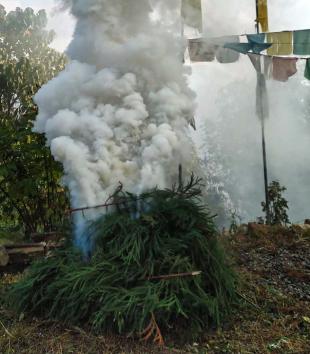 Purifying Multispecies Relations in the Valley of Abundance: The Riwo Sangchö Ritual as Environmental History and Ethics in Sikkim
Purifying Multispecies Relations in the Valley of Abundance: The Riwo Sangchö Ritual as Environmental History and Ethics in Sikkim
The Riwo Sangchö is a ritual exchange that facilitates smoky relations between humans and spirits resident in landscapes around the world.
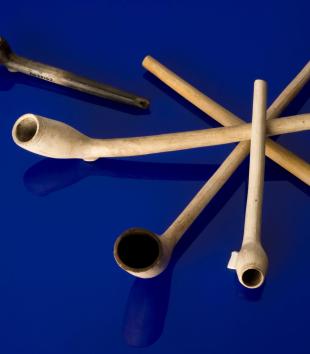 Material Technologies of Empire: The Tobacco Pipe in Early Modern Landscapes of Exchange in the Atlantic World
Material Technologies of Empire: The Tobacco Pipe in Early Modern Landscapes of Exchange in the Atlantic World
The look and shape, feel and function of the tobacco pipe footnote the transformational features of the early modern Atlantic world: landscapes of exchange.
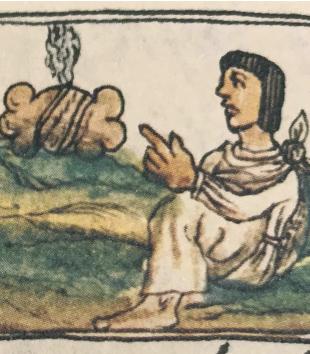 Locking Eyes with the Sun: Perception, Landscape, and the Fame of Greenstone in a Sixteenth-Century Nahuatl Narrative
Locking Eyes with the Sun: Perception, Landscape, and the Fame of Greenstone in a Sixteenth-Century Nahuatl Narrative
A narrative describing interactions between a human knower, sun, and precious stones enables a new interpretation of Nahua accounts of precious stones releasing vapors, while also providing greater insight into the nature of sensory experience in Nahua thought more generally.
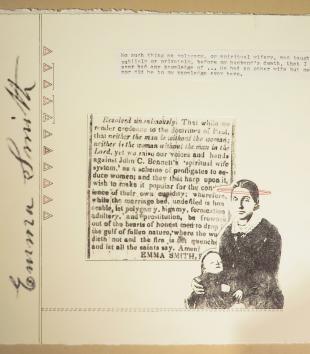 Art, Religious Memory, and Mormon Polygamy
Art, Religious Memory, and Mormon Polygamy
What happens when part of the religious history a person believes in turns out to be incorrect?
This special joint issue is published with The Journal of Southern Religion (JSR). The journals issued a call for papers together in 2017 and are pleased to publish these four peer-reviewed articles, two editorial introductions, and one editorial reflection. In his editorial reflection, Bill Ferris considers his own history with southern religion and material culture. Jason Young and Louis P. Nelson offer introductions for the four articles, with additional reflection on the state of the field.
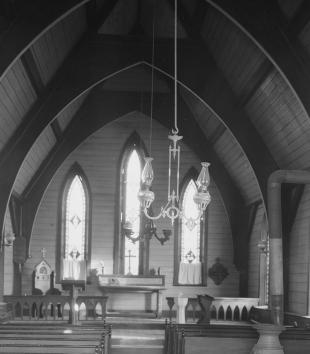 “A Doorkeeper in the House of My God”: Female Stewardship of Protestant Sacred Spaces in the Gulf South, 1830-1861
“A Doorkeeper in the House of My God”: Female Stewardship of Protestant Sacred Spaces in the Gulf South, 1830-1861
The movement to build and furnish new churches in the Antebellum South was not the moment of Protestant women’s religious domestication, but rather an opportunity for a new type of public stewardship of the church, one that encouraged female collective action. Women expressed their piety and leadership in the church by enhancing its materiality, they gave their churches permanence and social status.
 Horseshoe Crosses and Muddy Boots: Material Culture and Rural Masculinity in Cowboy Churches
Horseshoe Crosses and Muddy Boots: Material Culture and Rural Masculinity in Cowboy Churches
In a large pasture in West Texas, thirty-five men and women sit mounted on horseback and forty more stand around them. Sitting astride a horse in front of them is their pastor, next to another man holding a large American flag. He reads to them from the Bible of the wondrous changes brought by the Lord and then invites them to church the next day. With this simple invocation, the pasture roping at the local cowboy church is now underway.
 Uncle Tom’s Bibles: Bibles as Visual and Material Objects from Antebellum Abolitionism to Jim Crow Cinema
Uncle Tom’s Bibles: Bibles as Visual and Material Objects from Antebellum Abolitionism to Jim Crow Cinema
Stowe’s deployments of bibles and artistic representations of them in illustrated editions offered a conservative abolitionism that emphasized the potential for peace among former slaves and masters. . . . bibles in the afterlives of Uncle Tom’s Cabin continued to offer moderation when it came to issues of race and racial interactions.
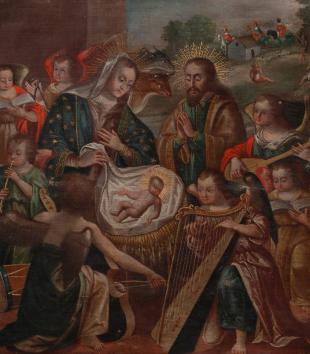 Audible Paintings: Religious Music and Devotion to the Infancy of Christ in the Art of the Viceroyalty of Peru
Audible Paintings: Religious Music and Devotion to the Infancy of Christ in the Art of the Viceroyalty of Peru
Paintings are silent, but not to those who know how to listen. Some paintings appeal to the sense of hearing in order to stimulate the beholder’s emotional engagement. For eighteenth-century nuns living in the Viceroyalty of Peru, paintings could evoke Latin polyphony or villancicos, songs in the vernacular performed in sacred contexts.